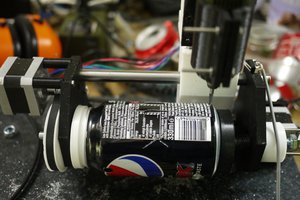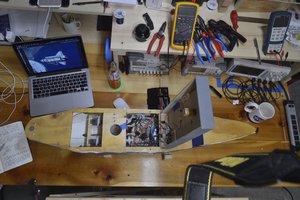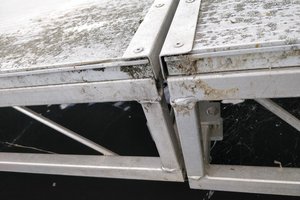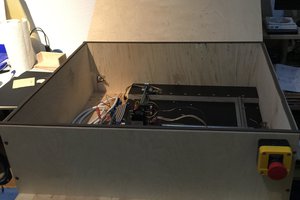
I used 1/4" thick bar stock as the base of the cutter. I laid out the initial design using a black sharpie and once I was happy with the design, I used copper sharpie to trace over the cut lines so that I could easily see and determine which lines were to be cut.
I used a piece of 1x1" tube clamped to the work piece as a guide for the torch, which allowed me to get straighter lines when cutting than I was able to by cutting freehand.

I used my Hypertherm 600 plasma cutter to cut out the base metal, which cut through it like butter. I'm still getting used to using a plasma cutter over oxy acetylene, but I am very happy with the precision cuts I get from plasma over oxy acetylene.

I used a flap disc to remove any rough edges from the cutting process and smoothed out the face of the cutter as best as possible. I used a dremel to clean up the way for the cutter head, though I had to do very little overall for cleanup because of the smoother cuts.
It definitely was not perfect, but overall, I was pretty happy with it. In the future, I might try making wooden templates to use as edge guides so that I can be a little more precise than freehanding curves, etc.
I used a section of 1x1" 1/8" thick tube as the base for the cutter head. I started by drilling and tapping a 3/8" threaded hole for the threaded spindle. I then added a small metal block at the base, welded it in place and drilled and tapped a 10-24 thread for the cutter spindle. I drilled and tapped a 1/4-20 hole in the bottom which would hold a space and washer to keep the cutter aligned and kept within the way.
I used a 1/4" to 1/2" steel spacer, 1/4-20 stainless bolt and fender washer to hold the cutter block to the base, then attached the 3/8" spindle, screwed on a nut and welded the nut to cutter block.
I used a 10-24 1" machine screw, an inexpensive Husky wheel cutter and a steel spacer for the cutting wheel assembly.


I put a 3/8" nut and stainless washer between the cutter head and the back support of the base as a means of adjusting the cutter head forward or back. I am considering getting a cheap HF reversible ratcheting wrench and permanently attaching it to the nut for adjustment.
To aid with retraction, I added two washers, a section of 1/2" spring and a 3/8" wing nut to the back of the cutter spindle.
I then drilled and tapped 2 evenly spaced 5/16" holes at the front of the cutter, where I added bearings to help rotate the oil filter while cutting.





Picked up a cheap filter for the purpose of trying out the cutter. It took a little bit of down pressure to get the blade to track right, but once it started tracking correctly, it cut through the filter like butter.
I picked up an inexpensive reversible ratcheting wrench. I took apart the cutter and slipped the ratcheting box end over the nut and then reassembled the cutter.
For the record, I am WELL aware of just how terrible FRAM filters are and would never use one in my own vehicles. I bought it because it was the absolute cheapest filter I could find to cut open for the single purpose of cutting open for proof of concept.


 BreeStephany
BreeStephany

 Grant Giesbrecht
Grant Giesbrecht
 zakqwy
zakqwy
 Jack Pearse
Jack Pearse
https://www.petculiars.com